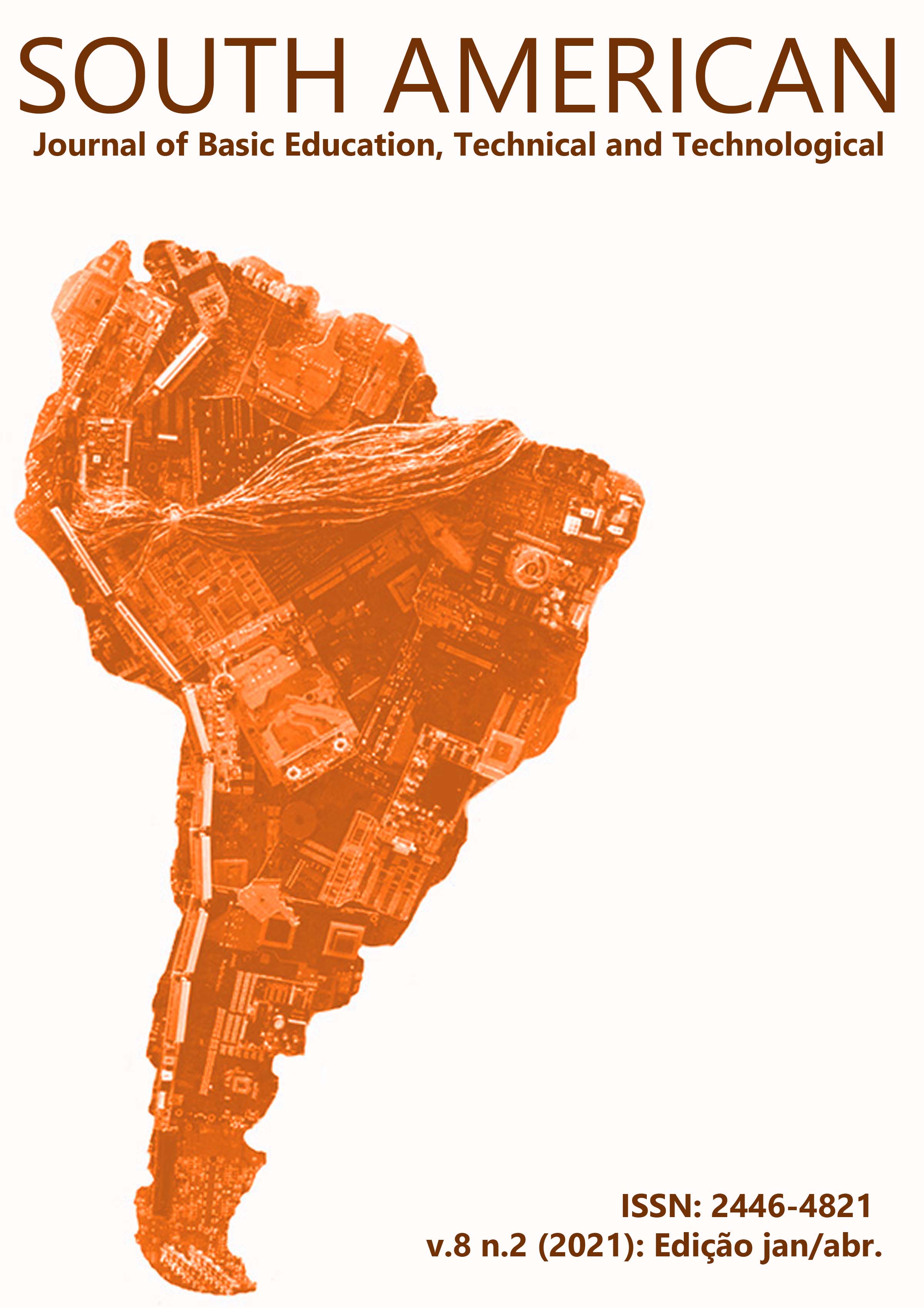CAN THIAMINE DEFICIENCY HELP TO UNDERSTAND THE NEURODEGENERATIVE MECHANISMS?
Keywords:
Tiamina, Deficiência de Tiamina, Álcool, NeurodegeneraçãoAbstract
Thiamine deficiency is used by researchers to study neurodegenerative conditions. Therefore, knowing the role of this vitamin in metabolism and the effects that its deficiency can cause is so important. The purpose of this essay is to review what is known about the role of vitamin B1 in metabolism and the neurochemical and behavioral effects that its deficiency, associated or not with alcohol consumption, can cause. This review shows that thiamine appears to have more roles than exclusively that of coenzyme in energy metabolism, also participating in neural processes. It also shows that there are several neurochemical and behavioral effects resulting from thiamine deficiency associated or not with alcohol consumption. We conclude that thiamine seems to be an important research target for understanding neurodegenerative conditions.
Downloads
References
[2] THOMSON, A. D.; BAKER, H.; LEEVY, C. M. Patterns of 35S-thiamine hydrochloride absorption in the malnourished alcoholic patient. J Lab Clin Med, 76(1):34-45, 1970.
[3] SECHI, G.; SERRA, A. Wernicke's encephalopathy: new clinical settings and recent advances in diagnosis and management. The Lancet Neurology, 6(5):442-455, 2007.
[4] BUTTERWORTH R. F. Maternal thiamine deficiency. A factor in intrauterine growth retardation. Annals of the New York Academy of Sciences, 678, 325–329, 1993.
[5] BAKER, H.; HOCKSTEIN, S.; DEANGELIS, B. & HOLLAND, B. K. Thiamin status of gravidas treated for gestational diabetes mellitus compared to their neonates at parturition. International journal for vitamin and nutrition research. Internationale Zeitschrift fur Vitamin- und Ernahrungsforschung. Journal international de vitaminologie et de nutrition, 70(6), 317–320, 2000.
[6] ALCAIDE, M. L.; JAYAWEERA, D.; ESPINOZA, L. & KOLBER, M. Wernicke's encephalopathy in AIDS: a preventable cause of fatal neurological deficit. International journal of STD & AIDS, 14(10), 712–713, 2003.
[7] BUTTERWORTH, R.F. Thiamine deficiency-related brain dysfunction in chronic liver failure. Metab Brain Dis, 24(1):189-96, 2009.
[8] HOYUMPA A. M., Jr. Mechanisms of thiamin deficiency in chronic alcoholism. The American journal of clinical nutrition, 33(12), 2750–2761, 1980.
[9] TALLAKSEN, C. M.; BØHMER, T.; & BELL, H. Blood and serum thiamin and thiamin phosphate esters concentrations in patients with alcohol dependence syndrome before and after thiamin treatment. Alcoholism, clinical and experimental research, 16(2), 320–325, 1992.
[10] ZHAO, R. & GOLDMAN, I.D. Folate and Thiamine Transporters mediated by Facilitative Carriers (SLC19A1-3 and SLC46A1) and Folate Receptors. Mol Aspects Med, 34, 2013.
[11] HAAS, R.H. Thiamin and the brain. Ann Ver Nutr, 8: 483-515,1988.
[12] YAMASHIRO, T.; YASUJIMA, T.; SAID, H. M. & YUASA, H. pH-dependent pyridoxine transport by SLC19A2 and SLC19A3: Implications for absorption in acidic microclimates. The Journal of biological chemistry, 295(50), 16998–17008, 2020
[13] MAYR, J.A. et al. Thiamine pyrophosphokinase deficiency in encephalopathic children with defects in the pyruvate oxidation pathway. Am J Hum Genet, 89(6):806-12, 2011.
[14] Aleshin, V.A.; Mkrtchyan, G.V.; Bunik, V.I. Mechanisms of Non-coenzyme Action of Thiamine: Protein Targets and Medical Significance. Biochemistry (Mosc), 84(8):829-850, 2019.
[15] Bunik, V.I.; Aleshin, V.A.; Zhou, X.; Krishnan, S.; Karlsson, A. Regulation of Thiamine (Vitamin B1)-Dependent Metabolism in Mammals by p53. Biochemistry (Mosc), 85(7):801-807, 2020.
[16] BETTENDORFF, L.; WINS, P. Thiamin diphosphate in biological chemistry: New aspects of thiamin metabolism, especially triphosphate derivatives acting other than as cofactors. FEBS Journal, v. 276, n. 11, p. 2917–2925, 2009.
[17] GIGLIOBIANCO, T. et al. An alternative role of F o F 1 -ATP synthase in Escherichia coli : synthesis of thiamine triphosphate. Scientific Reports, v. 1, 2013.
[18] LIU, D.; KE, Z.; LUO, J. Thiamine Deficiency and Neurodegeneration: the Interplay Among Oxidative Stress, Endoplasmic Reticulum Stress, and Autophagy. Molecular Neurobiology, v. 54, n. 7, p. 5440–5448, 2017.
[19] BUENO, K.O. et al. Spatial cognitive deficits in an animal model of Wernicke–Korsakoff syndrome are related to changes in thalamic VDAC protein concentrations. Neuroscience, v. 294, p. 29–37, 2015.
[20] KE, Z.J.; GIBSON, G.E. Selective response of various brain cell types during neurodegeneration induced by mild impairment of oxidative metabolism. Neurochemistry International, v. 45, n. 2–3, p. 361–369, 2004.
[21] ANDERSEN, B.B. Reduction of Purkinje cell volume in cerebellum of alcoholics. v. i, p. 10–18, 2004.
[22] BONTHIUS, D.J. et al. NeuroToxicology The protective effect of neuronal nitric oxide synthase ( nNOS ) against alcohol toxicity depends upon the NO-cGMP-PKG pathway and NF- k B. v. 29, p. 1080–1091, 2008.
[23] OSIEZAGHA, K. et al. Thiamine deficiency and delirium. Innovations in Clinical Neuroscience, v. 10, n. 4, p. 26–32, 2013.
[24] GANGOLF, M. et al. Thiamine triphosphate synthesis in rat brain occurs in mitochondria and is coupled to the respiratory chain. Journal of Biological Chemistry, v. 285, n. 1, p. 583–594, 2010.
[25] SINGLETON, C. K.; MARTIN, P.R. Molecular Mechanisms of Thiamine Utilization. Current Molecular Medicine, v. 1, n. 2, p. 197–207, 2001.
[26] NAVARRO, D. et al. Brain Lactate Synthesis in Thiamine Deficiency : A Re-evaluation Using 1 H- 13 C Nuclear Magnetic Resonance Spectroscopy. Journal of Neuroscience Research, v. 41, p. 33–41, 2005.
[27] TORVIK, A. Topographic distribution and severity of brain lesions in Wernicke's encephalopathy. Clinical Neuropathology, 6(1):25-29, 1986.
[28] SAVAGE, L.M.; HALL, J.M.; RESENDE, L.S. Translational Rodent Models of Korsakoff Syndrome Reveal the Critical Neuroanatomical Substrates of Memory Dysfunction and Recovery. v. 22, n. 2, p. 195–209, 2012.
[29] FREITAS-SILVA, D.M.; RESENDE, L.S.; PEREIRA, S.R.C.; FRANCO, G.C.; RIBEIRO, A.M. Behavioural Brain Research, 211(1):33-40. 2010.
[30] SCHOUSBOE et al. Energy Substrates to Support Glutamatergic and GABAergic Synaptic Function: Role of Glycogen, Glucose and Lactate. Neurotoxicity Research, 12(4):263-268. 2007.










